This is my favorite recipe for braised red cabbage! It’s tart, salty, and a little sweet, thanks to the addition of sliced apples.
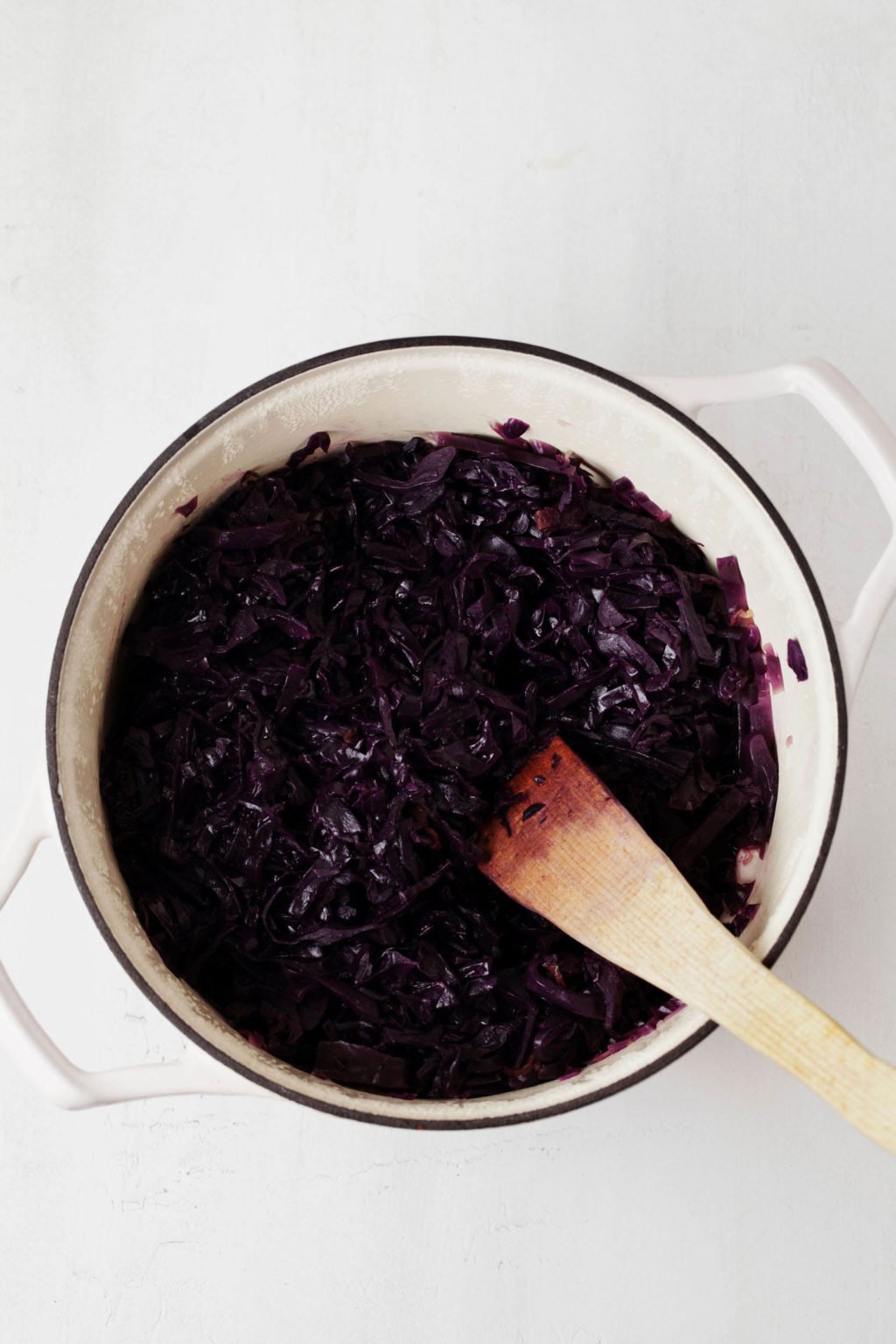
I don’t post a lot of vegetable side dishes on this blog.
This isn’t really a conscious choice. It’s a product of my habits. More often than not, the vegetable sides that I serve with my dinners are very, very simple.
Think steamed broccoli or kale, a little salad with whatever dressing I have in the fridge, or some seasonal vegetable that’s simply roasted with olive oil, salt, and pepper. All nutritious, all good, but not things that I think to share.
There are a few, slightly more thoughtful vegetable sides that I love. One is the miso butter Brussels sprouts that I shared in the fall. Another is some sort of massaged kale salad, often either my tahini mint kale salad or tofu feta kale salad.
When I want something that’s heartier than just a vegetable—a vegetable mixed with a whole grain—I really love this broccoli tabbouleh.
And then there’s braised cabbage.

Braised cabbage—it’s not the sexiest of recipe titles, is it? Yet it happens to be one of my trustiest, most beloved side dishes.
This humble veggie side is not only tasty, nutrient dense, and filling. It’s also versatile, easy to make, and it yields a big pot of cruciferous goodness, which means plenty of leftovers for the week.
Where I live, the ingredients for the recipe are available year-round. Because the dish incorporates apples, I tend to think of it as being a quintessential autumn and winter side. But, as I’m learning right now, it’s also great for the chilly days of late spring and beyond.
What is braising, exactly?
What does it mean to braise a vegetable?
Braising is what’s known as a combination cooking method—just a way of saying that it involves two different preparation techniques. It involves searing or sautéing something (usually meat or vegetables) at a high temperature, then adding liquid and simmering them over low heat.
The point is to create flavor from the high heat cooking, then to ensure a super tender texture through the slow simmering.
Technically, the cabbage itself in this recipe is only simmered. But the onions are browned first, which deepens the flavor of the whole dish.

Once the onions have browned a bit, you’ll add cabbage, apples, vinegar, salt, and broth to your pot. These ingredients are simmered for about 45 minutes, or until they’re very tender and flavorful.
Braised red cabbage ingredients
This recipe features a nice, short ingredient list. Here’s what you’ll need.
Red cabbage
You’ll need a single head of red cabbage to make the recipe. It should be small or medium-sized.
Heads of cabbage can range from being barely bigger than a closed fist to truly being the size of a human head. Use something in-between. After coring and thinly slicing or shredding, you should have about 1 3/4 lb of prepared cabbage.
Apples
This braised red cabbage recipe is based off of the cabbage component of the quinoa bowls with braised red cabbage, tofu, and Brussels sprouts in my cookbook, Power Plates.
I had tried braised cabbage before I made that recipe, but when I tested it for the book, I threw in apples for extra sweetness, nutrition, texture, and flavor. I loved the addition; it gave the cabbage more complexity and brightened all of the sweet/savory notes in the recipe.
I’ve added apples to my braised red cabbage ever since. Any variety of apple should work here, but I usually reach for honeycrisp, Fuji, or gala apples, which are the ones I tend to have in my fridge year-round.
Onions + brown sugar
The dry heat portion of cooking the braised red cabbage is to sauté onions and brown sugar for about 10 minutes, or until the onions are sweet, tender, and browning.
Do you have to add the brown sugar? No, you can choose to omit it. I recommend, it, though. The sugar will help the onions to brown and enhance their flavor. It will also help to give the braised red cabbage all of its intended sweet and savory notes.
As for the onion, I’ve made this recipe with white, yellow, and red onions. They’ve all worked very well, so you can go ahead and use what you have.
Vinegar
Apple cider vinegar adds acidity and tartness to the braised cabbage. If you don’t have ACV at home, you can try white wine vinegar as a substitute.
Salt
Diamond Crystal Kosher Salt is what I cook with at home, and I use between 1 1/2 and 2 teaspoons in this recipe.
You should adjust the salt in the recipe according to a few factors. First, how salty is your vegetable broth? Low sodium broth will call for more salt, regular broth may require less.
Second, how salty is your salt? Diamond Crystal Kosher Salt has less salinity than fine sea salt. If you use fine sea salt in the recipe, I recommend starting with 1/2 teaspoon and salting to taste at the end of cooking.
Vegetable broth
You can use your favorite vegetable broth, homemade or store-bought, to prepare the braised cabbage. A vegan no-chicken broth will also work well, as will vegan chicken-style bouillon.
As you braise the cabbage, you may need to add an extra splash of broth. Check the cabbage a few times as it simmers to make sure there’s some cooking liquid in the pot. There should be enough to continue cooking the vegetables, about an inch or two.
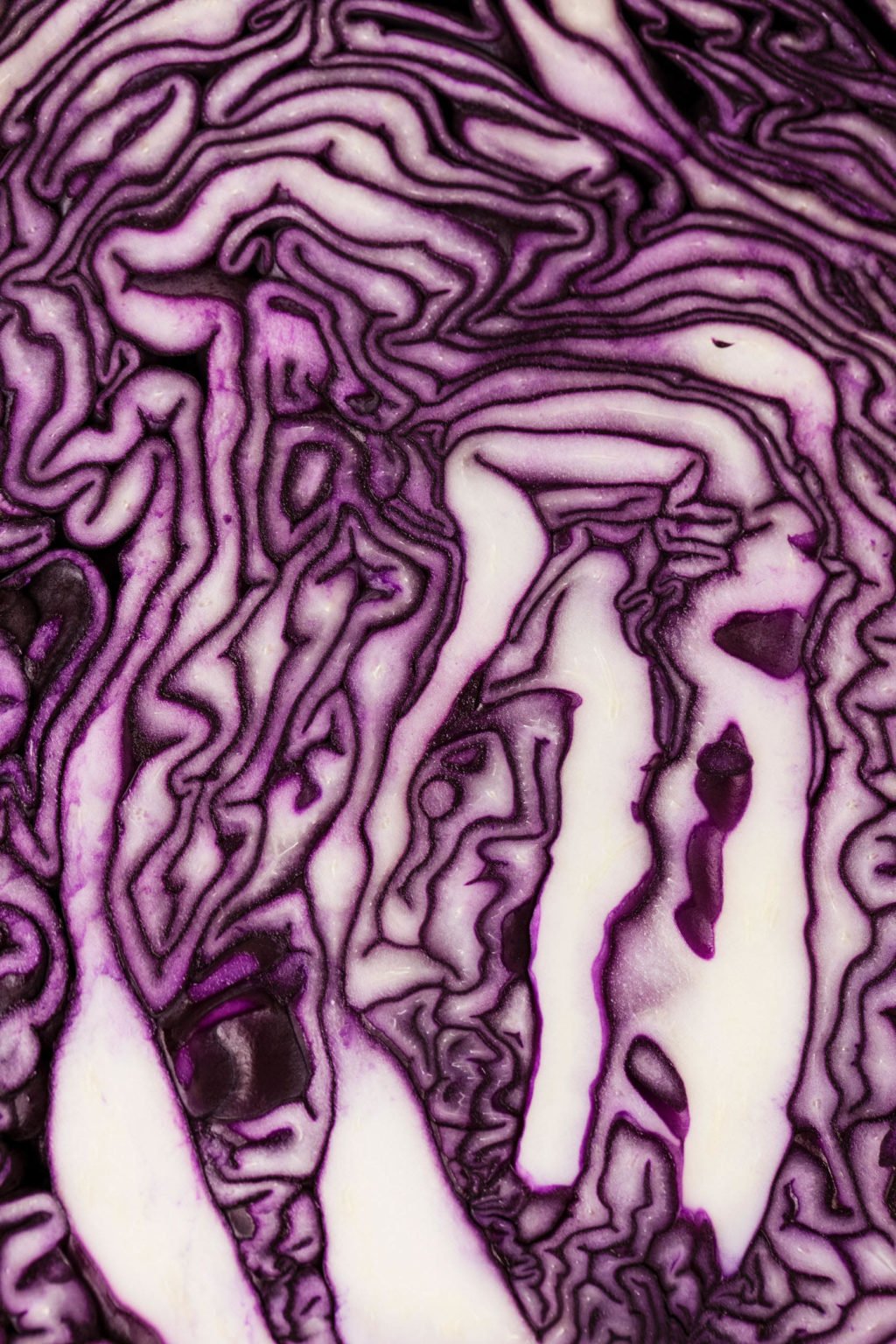
Do I need to use red cabbage?
Not at all. Green cabbage will also work well in this recipe.
All varieties of cabbage are rich in nutrition. Cabbage is a great source of dietary fiber, Vitamin C, Vitamin K, and Vitamin B6.
However, I’m especially fond of red cabbage (also known as purple cabbage, which I guess is a more accurate description).
That vibrant color means that the cabbage is a great source of anthocyanins, chemical compounds that may be beneficial for heart health and even have an anti-cancer effect.
Plus, red cabbage is just so pretty to look at!
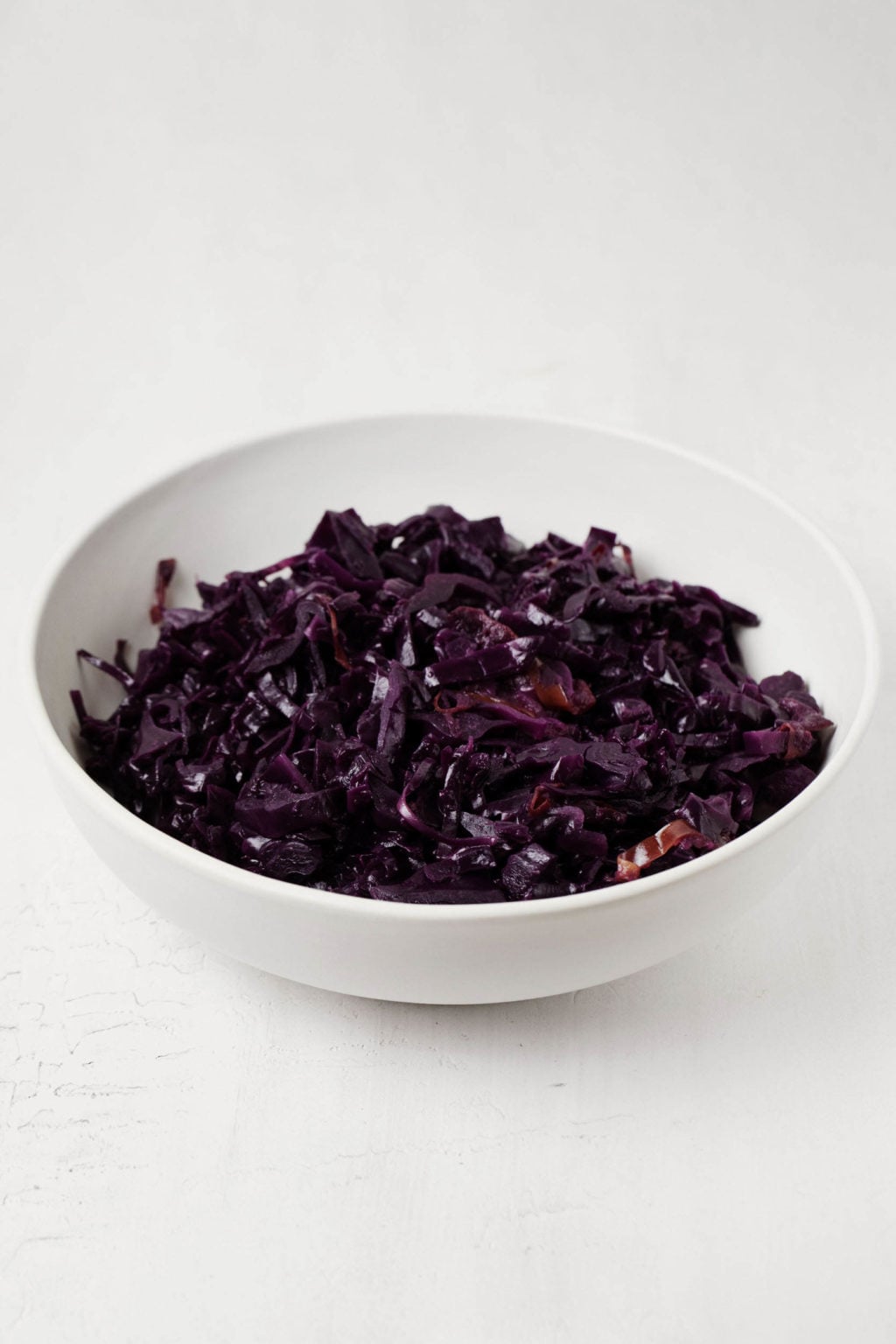
How to serve braised red cabbage
I find that the braised cabbage works fits nicely into a ton of different meals. It’s a great component to add to your favorite vegan lunch bowl, for starters.
Braised cabbage is also a good side dish to serve with a favorite plant protein. I’d recommend this recipe to go alongside my lemon pepper baked tempeh, balsamic mustard baked tempeh, balsamic baked tofu, your favorite preparation of seitan, or brothy white beans.
If you feel like staying within the braising theme, you could try the cabbage with my braised lentils on toast or my great big pot of braised beans and kale.
Another idea: have a scoop of the braised cabbage with your favorite lunch toast or sandwich for some extra nutrition. I love to have it with my miso tahini vegetable sandwich, fifteen minute tempeh lunch salad, tofu egg salad, and lentil tahini wraps.
Finally, you can make your favorite salad even more flavorful and colorful by tossing in a cup or two of the braised red cabbage.
I love raw, shredded red cabbage in my salads, but the cooked cabbage is more inherently flavorful as a salad mix-in. It’s an especially nice addition to grain salads, like this farro salad with balsamic roasted cauliflower or my lemony bulgur chickpea salad.
Meal prep & storage
Braised red cabbage is an easy, convenient dish to meal prep on weekends. It makes about six servings, and it can be stored for up to five days in an airtight container in the fridge.
The cabbage also freezes very well. You can freeze extra portions for up to six weeks, defrosting them whenever you need a nutritious, colorful, vibrant veggie to enliven your meals.
More favorite vegetable side dishes
When I do branch out beyond steamed broccoli for my dinner sides, here are some of the favorites that I reach for:
- Tofu feta kale salad
- Perfect winter chopped salad
- Miso butter Brussels sprouts
- Super simple, very green soup
- Broccoli tabbouleh
- Roasted broccoli with smashed root vegetables
- Quinoa kale stuffed sweet potato skins
- Tahini mint kale salad
- Sweet potato roasted red pepper soup

Braised Red Cabbage
Author –Ingredients
- 2 tablespoons olive oil
- 1 large or two medium/small red onions, thinly sliced
- 2 tablespoons brown sugar
- 1-2 teaspoons salt*
- 3 tablespoons apple cider vinegar
- 1 medium red cabbage, cored and thinly sliced (about 1 3/4 lb / 800 g after preparation)
- 2 large honeycrisp, Fuji, or gala apples, peeled, cored, and thinly sliced
- 1 1/2 cups vegetable broth (360 ml)
- Freshly ground black pepper, to taste
Instructions
- Heat the oil in a large skillet or pot over medium heat. Add the onion and sugar and cook, stirring occasionally, for 10 minutes, until the onion is very tender and clear.
- Stir in the salt, vinegar, cabbage, apple, and broth. Bring the broth to a boil. Turn the heat to low, cover, and simmer for 45 minutes, until the cabbage is very tender. Stir everything a few times during cooking.
- Season the cabbage with pepper, then taste and adjust the salt or vinegar if desired. Serve.
Notes
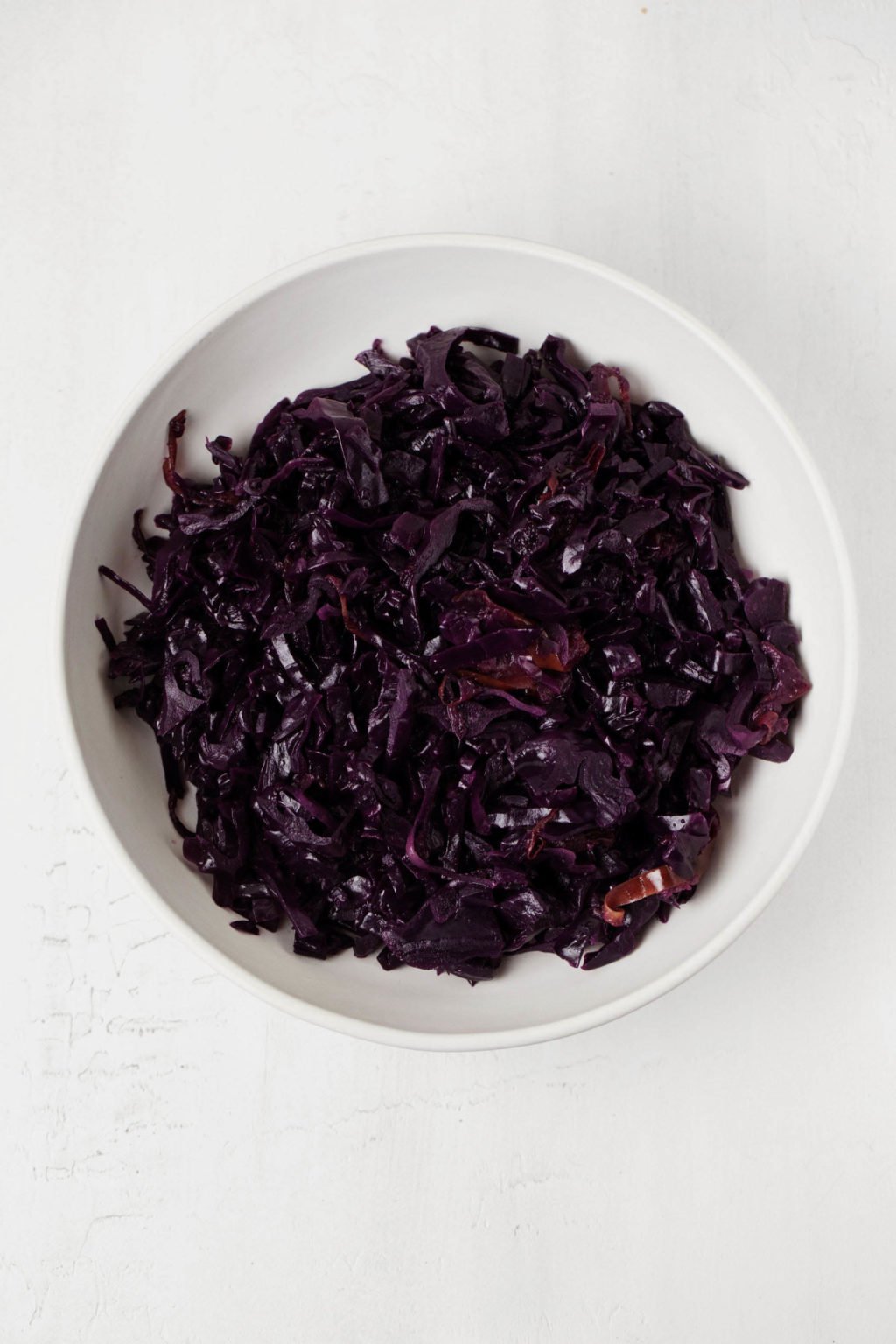
I’ve made quite a few pots of this cabbage over the last few weeks, and I’m happy to still have some in my freezer. I’ll be prepping the usual pots of grains and jars of sauce/dressing this weekend, and it’ll be just the thing to serve them with.
Hope you’ll enjoy this simple, nourishing staple, too. Happy hump day!
xo
This post may contain affiliate links. If you use these links to buy something I may earn a commission. Visit my privacy policy to learn more.
Method: One Skillet
Ingredients: Cabbage
Dietary Preferences: Gluten Free, Soy Free, Tree Nut Free, Vegan


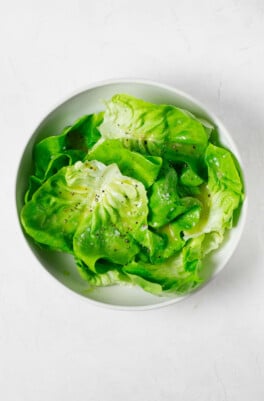
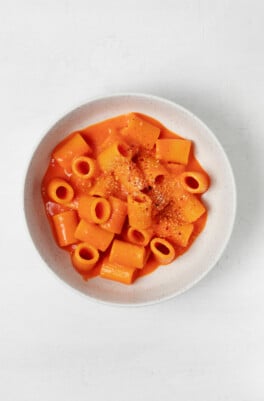

Leave a Comment
I Love red cabbage. Love. I use it finely shredded on tacos and in fresh summer rolls, make it quick-pickled (used many ways), use it in my fav Asian-inspired slaw salad. Your recipe is one more way to enjoy this favorite veg. Look forward to making this recipe this weekend. Thank you!